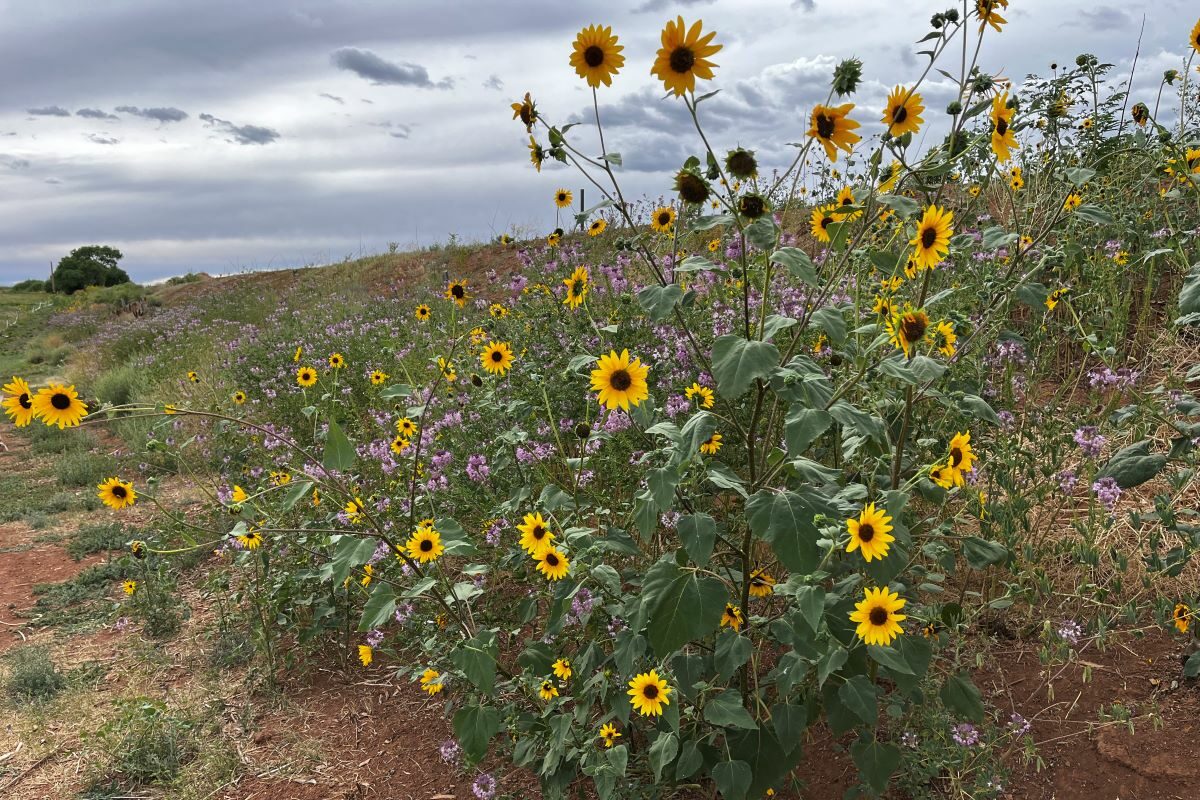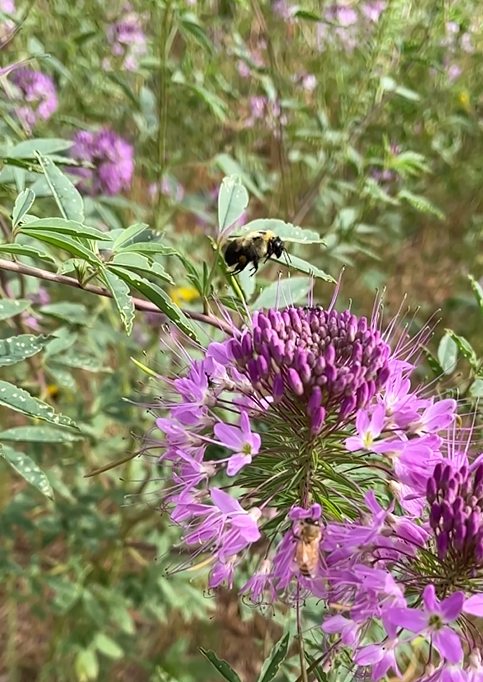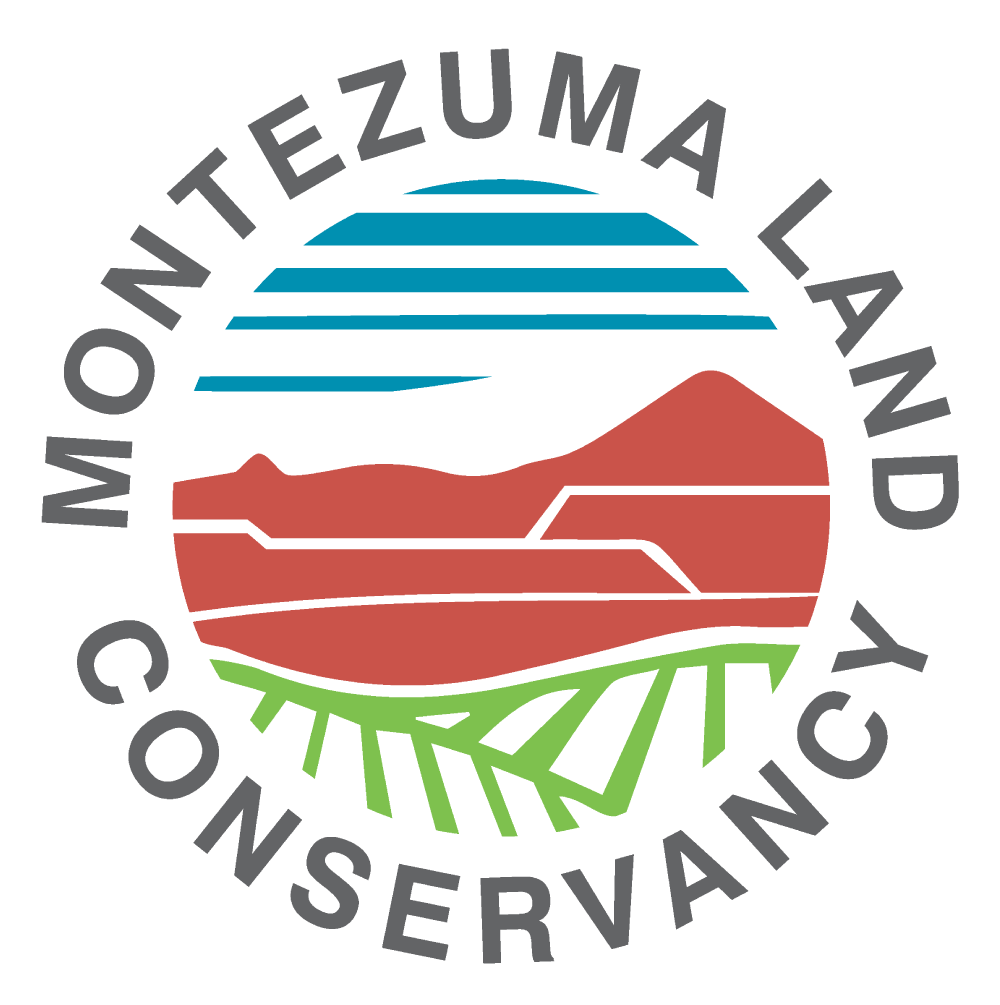Field Notes

Weeds on a berm at Fozzie's Farm.
March 13, 2024
Weeds – A Blog from the Farm
What is a “weed?” And just how many plants would fall under that dubious category?
American poet Ralph Waldo Emerson, a gardener himself, called weeds simply “plants whose virtues we haven’t yet discovered.”
There are Musk thistle, Canada thistle, mustard, knapweed, bindweed, and of course the toxic Western whorled milkweed and black henbane. Myself, Community Programs Director Jay Loschert, and many local students that have come to Fozzie’s Farm have (perhaps more than we like to admit) become familiar with the weeds that coexist alongside the clover and perennial grasses making up the landscape at Fozzie’s.
We say, “pull them up by the roots.”
“Don’t let ‘em go to seed.”
Less frequently, we call in a professional service to spray and “eliminate” the unwanted plants.
And yet—the weeds persist.
It must be said: the proliferation of weeds can have real consequences on farms and ranches in southwestern Colorado. Weeds consume resources—light, water, soil—that could at least in theory be devoted to grasses or high-quality forage. They consume our attention; ignore them at our peril!
If cutting a field for hay, they present a headache for the machine operator; go over here, but not over there! The consequences are logistical, economic, and sometimes visceral: several years ago, two cattle at Fozzie’s died after ingesting western whorled milkweed.
But seeing weeds as enemies to be eliminated can make us short-sighted in the end. It turns plants into “good” vs. “bad,” into objects that either suit us or don’t, depending on the moment and particular context.
One early morning last summer while moving water on the southern fields at Fozzie’s Farm, I came upon a musk thistle with a certain visitor at the center of its pink flower. The sun had risen enough to light up the sky blue but had not yet made its way to the valley floor. Almost immediately, a haiku popped into my head:
have you ever seen
a bee sleep? Waiting, waiting
on dew-soaked petals

I wonder if the definition of “weeds” can be expanded. A good start may be calling plants by their actual names. Then, to Emerson’s point, we may think about their individual “virtues” and roles in the ecosystem. Psst—they are there for a reason!
Weeds are wily survivors, able to go dormant and grow deep taproots to live in disturbed or compacted land. Responding perhaps to human attempts to control it, Canada thistle has evolved to reproduce from buds from its root system, which can extend 15 feet horizontally and 6 to 15 feet vertically. Pioneer species (like thistle) often serve as the bridge between degraded land and productive land by reducing erosion and soil temperature and providing conditions where microorganisms can begin to thrive.
The Rocky Mountain Bee Plant, otherwise known as Navajo spinach or simply stinkweed, in addition to attracting pollinators seen in the above video, is culturally significant. From medicine to dye to resin, it has had a wide variety of historical uses. Young shoots of the plant are important sources of Vitamin A and calcium.
And beyond their tangible benefits, weeds even inspire haikus!
Ah, winter. With the dog days of summer as a distant memory, it is easy to sing weeds’ praises and take the bird’s-eye view that they are, after all, just temporary.
In the middle of July, out in the field, on caked hands and knees, with the sun baking on your back? Now that’s a different story!
What are some “weeds” that exist near you? Do you know their names? Beyond the bad stuff, do they have a little bit of good, too?

See you on the Farm,

Aidan Gaughran
Community Programs Assistant
